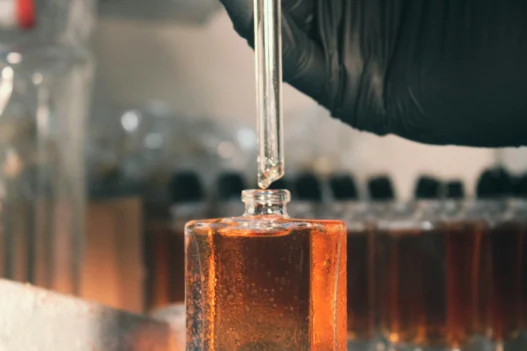Carbaryl is a commonly used insecticide that plays a significant role in everyday life. It is a key tool in agricultural practices, helping to protect crops from pests and increase overall yields. Additionally, Carbaryl is utilized in residential settings for pest control and can be found in garden centers for home use. Despite concerns about its potential impact on human health and the environment, Carbaryl continues to be a widely used and effective pesticide in various industries.
Table of Contents:
- 💡 Commercial Applications
- ⚗️ Chemical & Physical Properties
- 🏭 Production & Procurement
- ⚠️ Safety Considerations
- 🔬 Potential Research Directions
- 🧪 Related Compounds
💡 Commercial Applications
Carbaryl, also known by its chemical name 1-naphthyl N-methylcarbamate, is a widely used insecticide that has various commercial and industrial applications. It is commonly utilized in agriculture to control pests on crops such as fruits, vegetables, and grains. Additionally, Carbaryl is used in the forestry industry to protect trees from insect damage.
In addition to its insecticidal properties, Carbaryl also has applications in the production of plastics and resins. It is used as a curing agent in the manufacture of certain polymers. Carbaryl can also be found in certain household products such as pet flea collars and insect sprays.
Although Carbaryl is primarily known for its insecticidal properties, it has been used in certain drug and medication applications. In veterinary medicine, Carbaryl is used as a treatment for ectoparasites such as fleas and ticks on animals. Additionally, Carbaryl has been investigated for its potential use in the treatment of head lice infestations in humans.
⚗️ Chemical & Physical Properties
Carbaryl, also known by its chemical name 1-naphthyl methylcarbamate, is a white crystalline solid with a faint, characteristic odor.
The molar mass of Carbaryl is approximately 201.22 g/mol, and it has a density of around 1.225 g/cm³. This places Carbaryl within the range of molar masses and densities commonly found in food items.
Carbaryl has a melting point of 142-143°C and a boiling point of 147°C. These values are significantly higher compared to the melting and boiling points of common food items, such as sugars and salts.
Carbaryl is sparingly soluble in water and has a low viscosity. This contrasts with many common food items that are highly soluble in water and exhibit varying viscosities.
🏭 Production & Procurement
Carbaryl, a type of insecticide, is primarily produced through a chemical synthesis process involving the reaction of methyl isocyanate with α-naphthol. This reaction results in the formation of a carbamate, which is further processed to produce Carbaryl in its final form.
Carbaryl can be procured from chemical manufacturers or suppliers specializing in agricultural chemicals. It is commonly available in the form of granules, powders, or liquid formulations. The procurement of Carbaryl typically involves placing an order with a supplier and arranging for transportation to the desired location.
Once procured, Carbaryl is transported in sealed containers or packaging to prevent leakage or spills. It is important to ensure proper labeling and handling of Carbaryl during transportation to comply with regulations governing the use of chemical substances. Proper storage and transportation practices are essential to prevent any accidents or environmental contamination.
⚠️ Safety Considerations
Safety considerations for Carbaryl include the potential for skin and eye irritation upon contact. It is recommended to wear appropriate personal protective equipment, such as gloves and goggles, when handling the pesticide. In addition, Carbaryl should only be used in well-ventilated areas to minimize inhalation exposure.
Hazard statements for Carbaryl include “Causes skin and eye irritation” and “Harmful if swallowed.” These statements highlight the potential risks associated with exposure to Carbaryl through various routes, including dermal contact and ingestion. It is important to take necessary precautions to avoid contact with the pesticide to prevent adverse health effects.
Precautionary statements for Carbaryl include “Wash hands and any exposed skin thoroughly after handling” and “Do not breathe dust/fume/gas/mist/vapors/spray.” These statements emphasize the importance of practicing good hygiene and avoiding inhalation exposure when working with Carbaryl. It is crucial to follow these precautions to reduce the risk of harmful effects on human health and the environment.
🔬 Potential Research Directions
One potential research direction for Carbaryl is the investigation of its long-term effects on non-target organisms in various ecosystems. This may involve studying its impact on different species of insects, birds, and aquatic life over extended periods of time.
Another research avenue could explore the development of more environmentally friendly alternatives to Carbaryl for pest control. This could involve synthesizing new compounds or exploring the use of natural predators to manage pest populations without the use of chemical pesticides.
Research into the effectiveness of integrated pest management (IPM) strategies that incorporate the judicious use of Carbaryl alongside other pest control methods could also be a fruitful area of study. This may involve assessing the efficacy of different combinations of pest control measures in reducing overall pesticide use while maintaining effective pest management.
🧪 Related Compounds
One similar compound to Carbaryl based upon molecular structure is Aldicarb. Aldicarb is a carbamate insecticide with the chemical formula C7H14N2O2S. It is used for controlling a variety of insect pests on crops such as cotton, potatoes, and citrus fruits.
Another similar compound to Carbaryl is Methomyl. Methomyl is also a carbamate insecticide with the chemical formula C5H10N2O2. It is used to control a wide range of insects in various settings, including agriculture, horticulture, and forestry.
Carbofuran is another compound that is structurally similar to Carbaryl. Carbofuran is a carbamate insecticide with the chemical formula C12H15N3O3. It is used for controlling pests on a variety of crops, including corn, soybeans, and rice.







